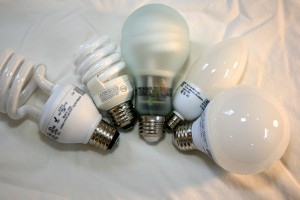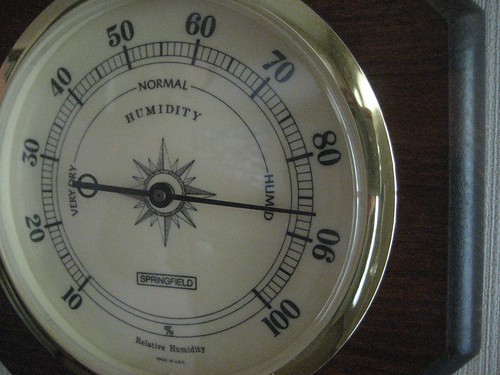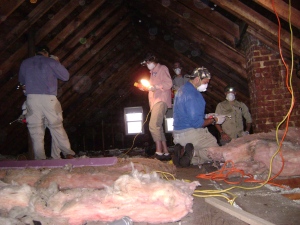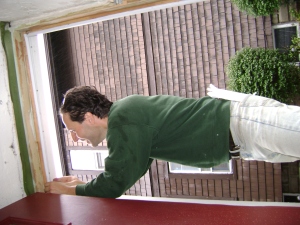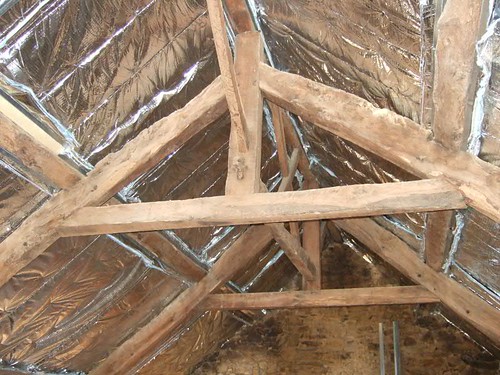
Photo courtesy Ian Haycox, some rights reserved
Admittedly, thinking about insulation or weatherization in the summer is something we’re not accustomed to. In the winter we think about all the heat lost, in the summer we want to lose more of it.
Insulation and weatherization are, however, critical in the summer to keeping cool air in and hot air out. If you haven’t yet, take a few moments to read the earlier Cool in the Summer piece.
Now here’s another quick experiment – On a hot day go from a well insulated but not air conditioned home into a shed to feel the temperature difference. If your shed is like most, on a hot day it is enough to make you want to pass out. The reason the shed is so much hotter? No insulation and no air-seal.
Insulation in the home, especially the attic, is critical during the hot days of summer. Roof temperatures can be well in excess of 100 degrees, which then transfer into the living space. (It also speeds deterioration of many roofing products. )
Insulation provides a barrier between your living areas and the blistering hot roof. It keeps the hot out and the cool in. The same goes for walls, especially south and west facing walls. The more insulation (properly installed, of course) the better.
Weatherization or air-sealing is of at least equal, if not greater importance. Why? Think about an insulated thermos holding iced tea at the beach. It’s going to do a good job, even in the hot sun, unless you leave the cap off, right? If you leave that thermos open you’re going to have hot tea in just a few minutes.
Same goes for your house. If you insulate it but have gaps, cracks and holes everywhere then all your cool air is going to go out, and the hot air in. That’s a waste of money, energy and comfort.
Finding leaks in the summer isn’t as easy as it is in the winter due to temperature and pressure differences (in the winter cold air comes billowing in, making it easy to walk inside the house to find leaks) but is possible. By contrast, in summer it is usually more comfortable to do much of the sealing work that should be done on the exterior such as door frames, window exteriors, basement penetrations and so on. Many caulks require temperatures be above 40 degrees, so now is a good time to use those.
What can I do now?
You may recall which rooms were uncomfortable during the winter – start there. Look for leaks around the windows, which are often installed improperly. Go around the perimeter of your house, twice – once looking down and once looking up.
First look at your foundation for various penetrations, especially where utilities (gas, water, electrical and cable) come in. Caulk and foam those as needed. Check the windows in your foundation too – where the frame meets the foundation, for gaps you can easily seal with some caulk.
Second pass look up, perhaps with a pair of binoculars if you’ve got some.
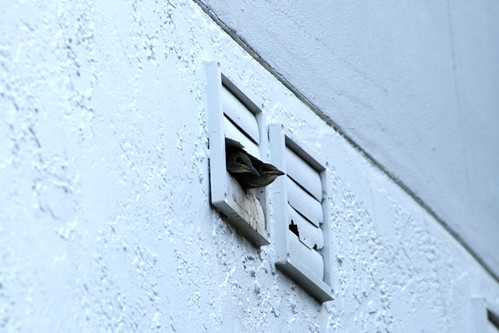
Broken exhaust flappers let outside air, and wildlife, in. Photo courtesy ureen Leong-Kee, some rights reserved.
Look where your windows meet the siding. Is there a gap that should be caulked? Are there any utility penetrations up there that should be sealed? Is there an exhaust vent improperly sealed or with the “flapper” stuck open?
Insulating the attic in the summer is not a good idea for most homeowners. Aside from the usual concerns with dust and stepping in the wrong place it is hot, brutally hot. Another benefit of leaving it to the pros is that there are tax incentives to get insulation done. You can find MA specific incentives through Mass Save.
-Jeremy

